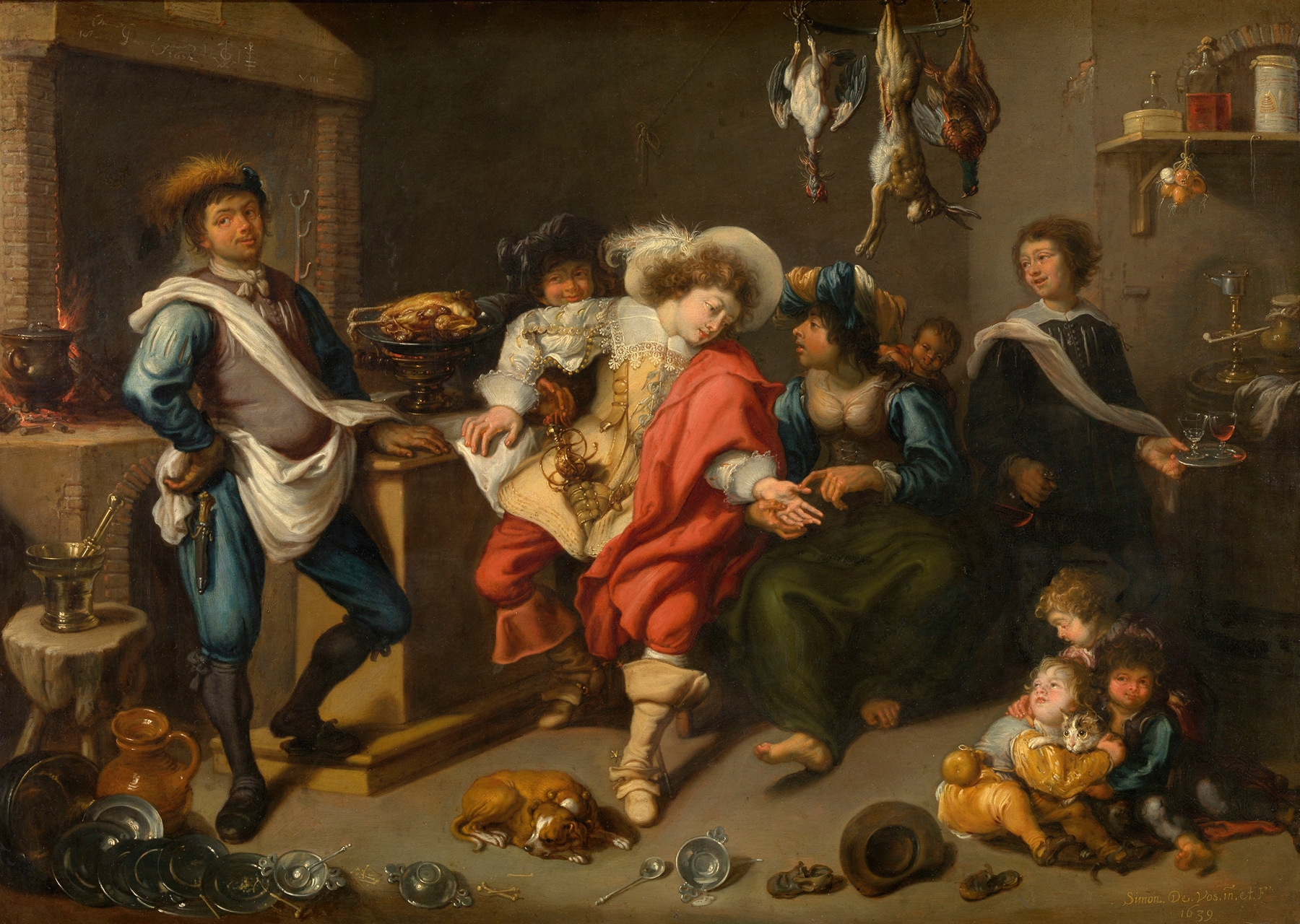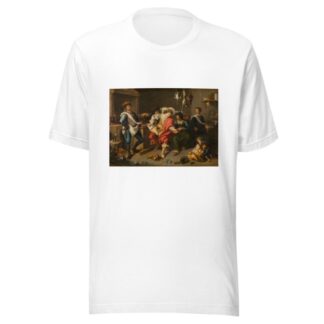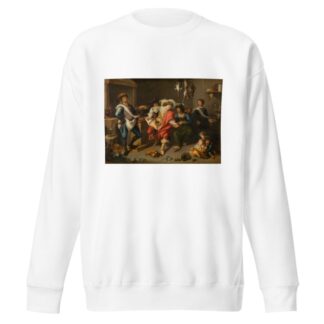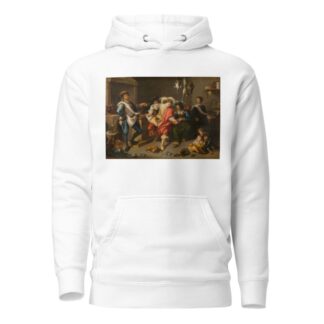Description
Gipsy by Simon de Vos printed on a Hoodie
About the Hoodie
Modern fit
It provides a more tailored look than a regular fit
Comfortable
The fabric and fit of this item are extra comfy
Tear-away tag
Easily removable tear-away tag that allows you to add a custom inside label
Premium quality
The product is made from premium, high-quality materials
Classic unisex hoodie with a front pouch pocket and matching flat drawstrings. The 100% cotton exterior makes this hoodie soft to the touch.
- 65% ring-spun cotton, 35% polyester
- Charcoal Heather is 60% ring-spun cotton, 40% polyester
- Carbon Grey is 55% ring-spun cotton, 45% polyester
- 100% cotton face
- Fabric weight: 8.5 oz./yd.² (288.2 g/m²)
- Front pouch pocket
- Self-fabric patch on the back
- Matching flat drawstrings
- 3-panel hood
- Tear-away tag
Simon de Vos (1603 – 1676)
Simon de Vos was a Flemish painter, draughtsman and art collector. He started his career making small-format cabinet pictures of genre scenes, in particular of Caravaggesque merry companies. Later he switched to history painting, working on larger formats in a Flemish Baroque style which was influenced by Rubens and van Dyck.
Simon de Vos was born in Antwerp as the son of the dice maker Herman de Vos and Elisabeth van Oppen.
At only 12 years old de Vos started his art studies in 1615 with the eminent portrait painter Cornelis de Vos (1584 – 1651), to whom he was not related. Upon completion of his training in 1620, he became at the young age of 17 a master in Antwerp’s Guild of Saint Luke.
There is uncertainty about de Vos’ movements after he became a master. It is possible that he stayed in Antwerp, where he may have worked in the workshop of Peter Paul Rubens. Alternatively, he may have travelled abroad. A stay in Rome is suggested by his early works, which show a similarity with the “low-life” genre paintings of the group of Dutch and Flemish painters active in Rome known as the Bamboccianti. An influence by the German painter Johann Liss active in Rome in the 1620s has been discerned in de Vos’ paintings and may also be explained by a residence in Rome. In addition, on the basis of the attribution to Simon de Vos of a 1626 composition referred to as Gathering of Smokers and Drinkers (Louvre Museum, Paris) it is believed that de Vos resided in Aix-en-Provence in France in the mid-1620s.
De Vos must have returned to his hometown in 1626 as in that year he married Catharina van Utrecht, a sister of the Antwerp still life painter Adriaen van Utrecht. The couple remained childless. He worked in Antwerp for most of his life. He is known to have supplied art works for the Antwerp art dealers Forchondt and Chrysostoom van Immerseel. He enjoyed the respect of his peers as is shown by the fact that when Rubens died his estate included one of his pictures. De Vos was successful financially. When his wife died in 1670 he possessed four properties in Antwerp and owned a collection of 290 paintings.
Between 1629 and 1649 he received 6 pupils. These included Gregori de Greeff, the other Jan van Kessel (ca. 1620-in of na 1661), Jan van Kessel the Elder and Caspar van Opstal.






Reviews
There are no reviews yet.